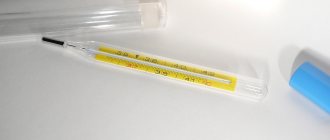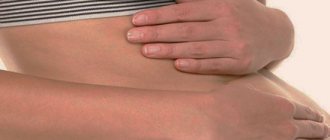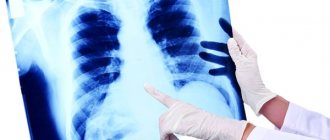A person is able to maintain body temperature in a relatively constant range from 36 to 37.1 ° C, despite the fact that he experiences many environmental factors and the influence of thousands of processes directly inside the body. Thanks to daily biorhythms, the temperature in the morning is lower, and in the evening, on the contrary, it rises. Changes in weather conditions, indoor air, physical activity, illness - all this can change body temperature both above and below the mentioned indicators. This process, reaching critical values, can lead to a life-threatening condition, so it is necessary to know at what temperature a person dies.
Average human body temperature
It is widely believed that the optimal temperature is 36.6 degrees Celsius. But each organism is purely individual, and small deviations both upward and downward from this indicator are quite normal. The average body temperature of the vast majority of people ranges from 36.5 to 37.2 degrees Celsius without the influence of external factors. If the usual temperature is slightly higher or lower than these values, but the person feels good and there are no deviations, then this is the norm for a particular organism.
Anything that goes beyond these boundaries and is accompanied by health problems (but this is not in all cases) requires a search for the causes of such a condition. A reduced body temperature (as well as an elevated one) indicates some kind of disease, poor functioning of life support systems, and the adverse effects of external factors.
In addition, the normal temperature at any given moment depends on several other factors. The individual characteristics of a particular organism, the time of day (usually at 6 o’clock in the morning the indicator is at a minimum level, and at 16 - at a maximum), age (for three-year-olds and children younger, the normal temperature is often 37.3-37.4 degrees, and in older people it can drop to 36.2-36.3), as well as some factors that have not yet been fully studied by modern medicine.
How to treat a child with a high temperature?
Yesterday Irina Vyacheslavovna called me from the Perm region and asked what she should do: her 4-year-old grandson, whom her daughter and son-in-law left in the care of her, while they themselves went on vacation to the sea with their eldest 9-year-old son, is running and jumping. And she touched his forehead and felt that his forehead was hot...
She got scared and took her temperature. She measured it the old fashioned way - she sat her grandson on her lap, put an ordinary mercury thermometer-thermometer under his armpit and began to tell him a fairy tale so that the grandson would sit quietly for three minutes. And she intended 37.8 degrees... The question sounded in the telephone receiver something like this: “Oh-oh-oh, doctor, what should we do?”
Are you scared by your baby's hot forehead? And despite all this, the child is cheerful, rushing from room to room, jumping on the sofa.
I’ll tell you this - elevated temperature is by no means always a signal of an onset of illness.
The thermometer shows 38 degrees, and the baby may be completely healthy: he is just hot after excessively active games or jumping from the sofa to the carpet and vice versa. Sit him next to you, read him an interesting fairy tale, give him the opportunity to watch a cartoon. After half an hour (not earlier, “cooling” also takes time!) measure the temperature again. Normal? Very well!
The temperature can rise not only due to illness, but also because the child is dressed too warmly or has just eaten, drank hot tea, as well as after vaccinations or as a result of an allergic reaction to something...
And yet we must be wary, of course... Most often, the causes of body hyperthermia in a child are not as harmless as we would like. And we usually put a thermometer on our own child after we notice something is wrong: the child has become somewhat lethargic and complains that something hurts. Symptoms such as a runny nose, cough, ear and throat pain, nausea or vomiting, abdominal pain, diarrhea, or a skin rash combined with a high fever indicate a viral or bacterial infection.
Sometimes the temperature can rise, but the manifestations of the disease are hidden - for example, with neurological and some other diseases.
If a child has a temperature above 38 degrees for two days, and he does not complain about anything, you need to show him to a doctor! Necessarily! You need to take blood and urine tests. Only the doctor will decide whether additional examinations are needed. And if needed, which ones exactly?
And further…
If, during an acute respiratory viral infection or a sore throat, the child’s temperature returned to normal, making you happy, and after a day or two it increased again, be wary... Perhaps some complication begins to develop: say, a sore throat, as a complication of the course of an acute respiratory viral infection, or pneumonia or pyelonephritis. In a word, in this case, do not solve the diagnostic problem yourself - be sure to call a doctor.
And some more important information:
You should definitely call an ambulance if:
- the child’s body temperature reaches 40° C and above;
- convulsions occur at high temperatures;
- there is a strong wet cough, and the child has previously suffered from pneumonia;
- an increase in temperature is accompanied by severe vomiting and diarrhea;
- the child has been diagnosed with chronic diseases of the heart, lungs, kidneys, nervous system or blood.
Did the answer help you? Share it with your friends!
Receive new articles directly to your email!
All letters in the “Nervous System” section
Attention! All online consultations should be double-checked with your doctor.
Features of temperature measurement
In Russia and the post-Soviet space, a person’s body temperature is measured, as a rule, with a mercury thermometer under the arm. This method has many disadvantages. First, the glass thermometer can break and the mercury can leak, which poses a serious health hazard because it is a toxin. Secondly, the accuracy of such measurements is questionable. The difference between the obtained result and the real one may differ by about a whole degree. In Western countries, electronic thermometers have become widespread, which measure the temperature in the mouth (in adults) or rectum (in children). In domestic conditions, such thermometers have not taken root. There is an opinion that they are less accurate than mercury ones, although in reality this is not at all the case.
Normal, elevated and low body temperature are individual concepts, but the indicators also depend on the method of measurement. For an electronic thermometer, and modern doctors recommend that patients use it, when measuring in the mouth the normal limit is from 35.5 to 37.1 degrees Celsius. The maximum measurement time in this case is 1-3 minutes, and the minimum is 10 seconds. With rectal measurements, temperature fluctuations can normally range from 36.2 to 37.7 degrees Celsius. The maximum measurement duration is from thirty seconds to a minute, the minimum is ten seconds.
Rectal measurements with an electronic thermometer are considered the most accurate. If you measure the temperature in the mouth, then the thermometer should be placed under the tongue, keep the mouth closed during the measurement so that the temperature sensor is not affected by the environment. It is not recommended to measure your armpit temperature with an electronic thermometer - this is the most unreliable method. Indicators may differ from actual ones. When measuring in the armpit, the thermometer should be pressed tightly to the skin, located along the body, and after the signal from the electronic thermometer, you need to wait another minute and a half. Women can take measurements in the vagina, but the results will be 0.1-0.3 degrees lower than actual results.
How to raise the temperature for the treasured reference?
Careless schoolchildren and students, using the capabilities of the World Wide Web, continue to search for recipes for raising their temperature in order to obtain an acquittal document in case of truancy. How to increase body temperature if there are no signs of illness? Basically, the advice found on the Internet involves artificially creating conditions for illness (cold milk, ice, an open window in winter and God knows what else...), but you can get so sick that you will regret it later.
Students of the last century rubbed their armpits with irritating substances, causing local inflammation - it was unpleasant, but it didn’t hurt in other places (I don’t want to go for a walk). But the doctor, suspecting deception, can measure the temperature at other points or ask to show the axillary area? And not everyone can do this.
And one more thing, also from the last century: there was this toothpaste “Pomorin”, so they mixed it with water and drank it. The temperature may have increased, but repeated vomiting was ensured, so no one used this method more than once. And we don't recommend it. In addition, the pasta has long disappeared from store shelves.
You can raise your temperature by filling your bathtub with hot water, running around the house, or getting too hot in the sun on a hot day, but then you need to re-read the next section on hyperthermia (what it is and what it leads to) and decide whether it’s worth risking your health for something. then an extra day of rest. And rest may be questionable.
Classification of hypothermia
In modern medical practice, a distinction is made between low and low body temperature in a child and an adult. The average low temperature is from 35 to 36.5 degrees Celsius, the low temperature is below 34.9 degrees. This human condition is called hypothermia in medical practice. Hypothermia is classified in different ways. There are mild (32.3-35 degrees), moderate (27-32.1 degrees), severe (body temperature below 26.9 degrees). According to another classification, hypothermia is divided into moderate and severe, the border between these conditions is 32 degrees.
It is the mark of 32 degrees that is considered the boundary at which the human body already exhausts its ability to independently thermoregulate and return indicators to normal limits without external intervention. It is this classification that is considered the most convenient and is widely used in modern medical practice.
A drop below 32 degrees Celsius threatens the dysfunction of many life support systems. The functioning of the respiratory system, heart and blood vessels is disrupted, brain activity and all metabolic processes slow down. A reading below 27 degrees can be fatal. This is a deadly low body temperature. The person will fall into a comatose state and the pupils will stop responding to light. Without urgent medical help, the patient has very little chance of survival.
History, however, knows cases that refute the last statement. After a two-year-old girl from Canada was left in the cold for six hours, the child’s body temperature dropped to 14.2 degrees, but the baby survived. But this is an exception to the rule, since hypothermia is an extremely dangerous condition.
At what temperature do viruses die?
Viruses, due to their specific structure, have high survival skills at low temperatures (they live for years, especially in liquid environments), but they die quickly at high temperatures. For all microorganisms that cause diseases in humans, the optimal temperature for reproduction is the range from 20 to 40°C. Therefore, they die when they leave this “favorable” range.
Influenza virus
This is one of the most frequent “guests” in the human body in dank and cold weather. The virus is unstable and dies even at room temperature if the air humidity is below 55%. Moreover, if the air humidity is about 100%, the virus can circulate in the air for a very long time. It feels calm both at -5°C and -15°C, maintaining its activity, but it dies in 5 minutes at temperatures above 50°C.
In the human body, the virus increases body heating to 38-41°C. The body temperature at which a person dies from the flu is more than 42°C. This condition appears in rare cases of severe influenza, namely, as a result of a very powerful immune response.
Influenza can be avoided by knowing how long and at what temperatures its pathogen dies:
- in dry room air at a temperature of 20°C for four hours;
- during the period of washing things in a washing machine at a temperature of 50-60°C;
- when boiling for one minute;
- when dried at a temperature of 30°C - per day.
Rotavirus
This is an infectious pathogen that survives both in conditions of high temperatures (up to 50°C) and low temperatures - down to -20°C, which makes it widespread. However, it cannot withstand freezing and boiling. Raises a person's temperature to 39 degrees.
Hepatitis A virus
This virus is widely resistant to the external environment, including temperature differences: it lives at 20°C in water for about a year, and in a dry environment for up to a week. It is killed almost instantly by boiling, but heating to 60°C kills it in just half a day and then with constant action. Causing disease, the virus raises the temperature to 38-39°C. A person usually does not die from the hepatitis A virus, but they must undergo a long course of treatment in a hospital.
HIV
The human immunodeficiency virus is extremely unstable and practically does not live in the external environment. Outside the body, it lives for several minutes when open, but when bound (in a drop of blood or sperm) it does not die within 48 hours. Its optimal temperature of existence is 33-39°C. Due to the increase in the number of AIDS diseases, many people are interested in the question at what temperature does HIV die. Such a dangerous virus dies at 60°C for 40 minutes.
Koch stick
Mycobacterium tuberculosis, or Koch's bacillus, multiplies in conditions from 37 to 42°C, living in human tissue for decades. This is a very tenacious microorganism - it can exist both in conditions of high humidity (in damp, cold basements for about 7 years) and in places where there is a lot of sunlight (at +10°C for about 2 months). The mycobacterium dies when boiled or heated to +85°C.
Knowing at what temperatures the HIV virus, hepatitis A, influenza, mycobacteria, and so on die, you can prevent infection and their spread. And knowing at what body temperature a person dies, you can prevent processes that lead to death.
Common Causes of Low Temperature
Why is there low body temperature (below 35.5)? As a rule, the cause of this condition is fatigue and decreased immunity. Good sleep, proper rest, vitamins and a balanced diet will help. The situation is quickly normalizing. But in some cases, the causes of low body temperature (we’ll look at what to do with this condition further) can be extremely dangerous. There are a lot of factors that cause a decrease in temperature, so they are usually divided into three general groups:
- Physical reasons. Failures in thermoregulation, which normally should be provided by the human body constantly, lead to significant heat loss. Typically, this occurs due to dilation of blood vessels over a long period of time. Hypothermia can occur in people with low blood pressure and dilated blood vessels. This group also includes endocrine diseases, or more precisely, increased sweating, which disrupts normal thermoregulation.
- Chemical factors. This includes general intoxication of the body, weak immune defense, low hemoglobin, excessive emotional stress, physical fatigue, and the period of bearing a child.
- Behavioral reasons. This category includes factors that affect the body due to inadequate perception of environmental temperature. Hypothermia can occur when the body is exposed to alcohol or drugs, as well as due to an unbalanced emotional state.
Robert Mendelsohn, pediatrician:
When you call the doctor to report that your child is sick, the first question he almost always asks is: “Did you take the temperature?”
And further, regardless of what data you tell him - 38 or 40 degrees, he advises you to give the child aspirin and bring him to the appointment. This has become a ritual for almost all pediatricians. I suspect that many of them say memorized phrases, even if they hear about the temperature being 43 degrees.
I worry that pediatricians are asking the wrong questions and giving the wrong advice. Doctors see a rise in temperature as something extremely dangerous, otherwise why is it their first concern? And from their advice to give their child aspirin, parents inevitably conclude that treatment should be medicinal and aimed at reducing the temperature.
An appointment in most children's clinics begins by measuring body temperature and recording its readings in the medical record. There is nothing wrong. Fever is indeed an important diagnostic symptom in the context of follow-up examination. The problem is that it is given much more importance than it should be. When a doctor sees a nurse's note on the chart about a temperature of, say, 39.5 degrees, he invariably says with a gloomy look: “Wow! Need to do something!".
His concern about temperature is nonsense, and misleading nonsense! There is no need to do anything about the increase in temperature itself. In the absence of additional symptoms, such as unusual behavior, particular weakness, difficulty breathing, or others that suggest serious illnesses such as diphtheria and meningitis, the doctor should tell the parents that there is nothing to worry about and send them home with the child.
Taking into account the exaggerated attention doctors pay to fever, it is not surprising that the majority of parents, according to sociological surveys, experience great fear of it. Moreover, this fear grows in proportion to the readings of the thermometer, while it is most often groundless.
Some private reasons
Each of the above groups of reasons that provoke low body temperature includes a sufficient number of special cases. It is worth identifying the main ones more specifically:
- Alcohol and drug intoxication. While under the influence of these drugs, a person may perceive reality inadequately and not feel the cold. People may even fall asleep in the cold, becoming hypothermic. Additionally, it should be taken into account that ethanol and opium substances create a deceptive feeling of warmth.
- Prolonged hypothermia. Staying under the influence of extremely low temperatures for a long time leads to the fact that the body ceases to cope with heat regulation on its own. In addition, in such extreme conditions, additional energy is consumed, so the time during which the body can resist low temperatures is significantly reduced.
- Bacterial and viral infectious diseases. As a rule, in diseases, hypothermia occurs when the causative agent of the disease has already been overcome. Up to a certain temperature, the body must fight the infection on its own. If you use antipyretics at this time, the symptoms disappear, but the defense mechanisms continue to work, resulting in a low body temperature in an adult.
- Fasting and dieting. For the normal functioning of thermoregulation processes, the body requires calorie reserves and fat deposits. Insufficient nutrition (it can be either forced or planned) leads to disruption of thermoregulation mechanisms and a decrease in temperature.
- Sepsis in the elderly and patients with weakened immune systems (immune diseases). Sepsis, as a rule, is the cause of an increase in the mark on the thermometer, but this disease can affect the central nervous system, including the segments that are responsible for thermoregulation processes. The temperature can drop to 34 degrees Celsius.
- Taking certain medications. Improper handling of patients who have undergone surgery and excessive use of antipyretics and vasoconstrictors can cause a critical decrease in body temperature.
- Features of the menstrual cycle. The menstrual cycle in women may be accompanied by slight fluctuations in body temperature. As a rule, during menstruation the temperature drops slightly, and during ovulation it rises. A mark of 35.5-30.6 degrees on a thermometer during menstruation is not considered a pathology.
- Wilson's temperature syndrome. This disease is caused by dysfunction of the thyroid gland, as a result of which the body temperature decreases.
Should I bring down the high temperature?
Body temperature: what does it depend on and what should it be? A high temperature is a reason to seek medical help. If the body temperature does not exceed 38 0C, hyperthermia does not pose a danger to a person. It is not worth bringing down such a temperature, because in most cases it is a protective reaction and helps the body fight infection and inflammation, except, of course, in cases where hyperthermia is caused by other reasons.
If your body temperature is above 38 0C, you must take an antipyretic drug before the doctor arrives. Subsequent examination will shed light on the causes of hyperthermia and find the right way to solve the problem.
At a temperature above 40 0C, there is a threat to life, in this case you should take an antipyretic drug and immediately call an ambulance.
Hyperthermia is most severely affected by adults with diseases of the cardiovascular system, the elderly and infants. Older children, when their body temperature rises, may outwardly look practically healthy, but this is not a reason to think that hyperthermia does not pose a danger to them.
Hyperthermia in patients at risk often takes on threatening forms, is accompanied by convulsions, the development of heart failure, and is difficult to control and treat, which is why you should not delay taking an antipyretic drug and calling a doctor.
Tags: influence • health • treatment • medicine • cognitive • body • temperature • person
Low temperature during pregnancy
What does low body temperature mean during pregnancy? This phenomenon is facilitated by the processes that occur in the body of a woman carrying a child. In addition, due to toxicosis, many expectant mothers are forced to malnourish, and this affects metabolic processes, so that the temperature can drop to 36 degrees and below. Often, pregnant women experience a decrease in immune defense, which may result in a decrease in temperature. This does not cause serious problems, but requires an adequate response. It is necessary to normalize the diet and work to improve the immune system.
More about rising temperatures
The body often copes with elevated temperatures on its own, and sometimes we simply don’t notice it.
Most often, the temperature rises when encountering an infection, viral or bacterial:
- First, the body tries to destroy the enemy at the level of cellular immunity, with the help of elements constantly circulating in the blood that quickly find and destroy the foreign substrate (phagocytosis). At this stage, low-grade fever is often observed, although signs of illness may be absent. A person who has good immunity may, during thermometry, record a rise in the reading to 37° or not notice a “stranger” at all, without an invitation to visit, when the thermometer shows normal values. We are surrounded by many viruses and bacteria; they enter the body, but not every one of them causes disease, because cellular immunity is constantly working.
- In other cases, both the infection and the body may have different abilities (the infectious agent is too strong or the immune system is weak), so the immune system includes the next level of combating the pathogen - antibody formation, which noticeably increases body temperature. This is the moment when the temperature tends to 38°C, or even crosses this line. It’s easy to bring down the temperature here, but is it worth doing it if the active production of immunoglobulins that can react with the infection and neutralize it requires exactly these conditions (37 - 38°). Usually the smartest thing to do is to wait and take periodic temperature measurements to make sure you don't miss an excessive rise.
While relying on the body’s capabilities, it should be borne in mind that a child’s temperature, even if it does not reach 38°C, can result in the development of seizures, so for such children it can be reduced, starting from 38 degrees. Similar actions are provided for adults suffering from heart, liver and kidney diseases.
- The thermometer approaching the number 39 means that measures need to be taken, even if there are no symptoms of infection. In any case, the body will not feel normal in conditions of high temperature: headache, chills, aches throughout the body and other signs of temperature will not go unnoticed. If a temperature of 39 degrees and above is accompanied by symptoms of infection, then it also becomes obvious that the body is “losing its ground”, antibodies stop being synthesized, because they, being protein structures, coagulate (collapse) after 38.5 degrees, in general, an important process antibody formation is suspended.
Video: elevated temperature in a child - Dr. Komarovsky
No one is immune from the cold and its manifestations
If there is a belief that the cause of an unacceptable increase in temperature (above 38.5° in adults, 38°, and sometimes lower in children) is a cold and respiratory infection, then at home it is not only possible to reduce it, but also necessary, but it is still advisable to avoid previously using such a popular aspirin. In the case of a viral infection, it, by thinning the blood, can aggravate hemorrhagic manifestations in the respiratory tract (impaired microcirculation, swelling) and further complicate the course of the disease. In addition, aspirin is “not indifferent” to the gastric mucosa and this also needs to be taken into account. Other fever pills are now somehow a thing of the past; they have been replaced by mixtures based on paracetamol with vitamin C - both tasty and effective.
As for children, it is problematic for many of them to give pills at all, especially if the child is small. Pediatricians not only do not recommend aspirin - they prohibit it until the age of 16; other medications in tablets can cause a huge protest on the part of the child. Thank God, now dosage forms such as suppositories and syrups have been invented for the little ones, the active ingredient of which is paracetamol or ibuprofen .
In addition to tablets, other remedies are used at home: warm linden or raspberry tea with honey, lubricating the skin with vodka or vinegar, thermal procedures are excluded. At the same time, parents should remember that such popular folk remedies among adults may not be suitable for a child:
- Honey and raspberries are classified as hyperallergenic foods;
- Raspberries themselves, in addition to all their advantages, contain natural salicylates, due to which they have an antipyretic effect, therefore, contrary to the recommendations of grandparents, in case of viral infections it is better to refrain from using this tasty and fragrant jam;
- The use of alcohol, vodka, and vinegar should be strictly dosed, because these liquids are absorbed through the pores of the delicate skin, and inhalation of vapors may not be harmless if too much occurs.
Video: when paracetamol does not help - Doctor Komarovsky
Hyperthermic syndrome in case of poisoning
Poisoning is also different. Let’s say a person ate “something wrong” and after a while received signs of poisoning: he began to feel sick, vomited, had diarrhea, the temperature rose a little, but the condition did not look threatening. With the help of activated carbon, diet, chamomile tea, mezim, after a couple of days everything was somehow restored, and soon it was completely forgotten. But there is another variant of the course of acute poisoning - with the development of life-threatening syndromes (pain, respiratory failure, circulatory disorders, convulsions, acute renal failure ... and hyperthermic syndrome).
In case of poisoning accompanied by toxic damage to the brain, against the background of respiratory and circulatory disorders leading to tissue oxygen starvation, the hypothalamic zone of the brain is excited, resulting in a significant increase in body temperature. This is hyperthermic syndrome. The thermometer in these situations can reach 42°C, which, of course, requires emergency assistance. Having called an ambulance, loved ones should try to help the patient’s body increase heat transfer in order to lower the temperature somewhat. At home, the range of activities is not wide; fever pills are useless as an antipyretic and are harmful to the stomach, but this is what you can do:
- In winter, open the window to cool the room;
- Cover the patient with ice packs (or whatever is in the freezer of your home refrigerator);
- Moisten the body with water or quickly evaporating liquids - alcohol, vodka (with caution in children!).
By performing these simple steps, already at the prehospital stage, you can achieve certain successes that may save a person’s life.
Symptoms of low temperature
Low body temperature in an adult or child can be either an independent symptom or accompanied by other signs of pathology. In addition, general weakness, trembling, problems with coordination of movement, drowsiness, low pulse, gagging, irregular heartbeat, and in especially severe cases, hallucinations, blurred vision, unclear speech, confusion and loss of consciousness may occur. With such symptoms and low body temperature in a child or adult, you should urgently consult a doctor.
Symptoms
A high fever without symptoms is extremely rare in an adult. As a rule, this human condition manifests itself in the form of the following symptoms:
- body aches;
- general weakness, increased fatigue;
- drowsiness;
- almost complete lack of appetite;
- muscle pain;
- pain in the eyes;
- chills;
- headache;
- fluid loss;
- dizziness;
- low blood pressure;
- lack of coordination.
A high temperature in a child can manifest itself in the form of the following signs:
- moodiness;
- drowsiness;
- apathy;
- lack of appetite;
- general weakness.
In more complex cases, the general clinical picture may be supplemented by convulsions, hallucinations and delusions. Additional signs of the general clinical picture will depend on the causes of the high temperature. In any case, you cannot take medications at your own discretion in this case. This can lead not only to a worsening of the condition, but also to a blurred clinical picture, which significantly complicates further diagnosis.
It should be noted that, just like in adults, a high temperature without symptoms is extremely rare in a child. This is due to the fact that the immune system of a child’s body is much weaker than that of an adult and any disturbance in the functioning of the body manifests itself quite quickly.
Actions to take when the temperature drops
The physical condition of a person who has a low temperature should be adequately assessed. If you are not afraid, there is no weakness or other signs of illness, you need to remember whether you have recently had hypothermia or illness. A slight drop in temperature may be a residual symptom. In this case, there is no need to see a doctor. In addition, it is possible that low temperature is the normal state of a particular organism.
If the temperature has dropped due to hypothermia, then you need to put the victim in bed, cover him, paying special attention to the limbs, but leave the head and chest open. Wet clothes need to be changed. If your extremities are frostbitten, you cannot warm them up with water, but you can apply a warm heating pad to your chest. The victim needs a hot drink, but alcohol or coffee is contraindicated. You can use baths (water temperature up to 37 degrees Celsius) to warm up.
A decrease in temperature caused by malnutrition requires normalization of the diet. The patient also needs ascorbic acid, which has a good effect on the immune system, and children are additionally recommended to be given vitamin E.
If the mark on the thermometer is low due to illness or other reasons, and other symptoms of the disease are observed, then you should call a doctor. Before the doctors arrive, the patient must be put to bed and covered with a warm blanket. It is necessary to provide the person with complete peace of mind, give him warm tea to drink, and put a heating pad under his feet. This will allow the body to establish the process of thermoregulation; in most cases, the temperature will begin to rise to normal.
Temperature and symptoms
There is a temperature, but there are no symptoms - is this possible?
Some people often take their temperature with or without signs of illness, and just as often wonder why the number 37 is becoming a common occurrence. The reason for this increase may be:
- Neuroses and neurosis-like conditions;
- Ovulation phase and pregnancy;
- The onset of an infectious disease;
- Chronic sluggish inflammatory processes.
Of course, a temperature of up to 37° and slightly higher can rise from overheating, excitement, or mental stress, but in such cases a person is usually in no hurry to grab a thermometer, and therefore does not know anything about it.
A temperature of 38°, and even more so 39 degrees, is unlikely to be completely without symptoms, because the fever itself immediately makes itself felt with chills, headache, unpleasant sensations in the bones, etc., which an adult can tell about, but not a small child will say, he will simply cry and be capricious.
A child’s temperature without signs of infection may also be a precursor to it or accompany teething. Previously, pediatricians completely rejected any manifestations of the disease (fever, anxiety, indigestion) during teething, saying that by blaming it on the teeth, a serious pathology could be missed. This is, of course, true, but it has long been scientifically proven that the baby experiences pain akin to the sensations during childbirth. In addition, it is unlikely that the baby will like the redness and itching of the gums, and he will remain calm and healthy. Children are nervous, cry, sleep poorly - the body temperature rises, and other symptoms may appear (loose stools, signs of a respiratory infection). In such cases, you need to call your local doctor so that he can look, listen to the baby and dispel or confirm doubts about another disease.
Symptoms of the disease without fever
In other situations, the opposite picture can be observed: the disease is obvious, there are symptoms, but the thermometer stands at normal levels, rooted to the spot. We will not list all the cases separately; let us consider as an example some of the most common symptoms that often accompany febrile conditions:
- A long-term (up to 3-4 months) cough, as a complication of influenza or other acute respiratory viral infections (tracheitis, bronchitis), as a rule, occurs without an increase in temperature, especially difficult to cure in children and the elderly, because the immune system is still or already imperfect. It is worth noting that the cough of smokers is also not accompanied by an increase in body temperature, but people who have this bad habit know such subtleties and do not ask unnecessary questions.
- In case of poisoning, in addition to an increase in temperature, symptoms of intoxication are observed: vomiting, diarrhea, cold sweat, chills, etc., however, vomiting against a background of low temperature indicates significant intoxication and this should be taken into account when providing assistance to the patient (most likely, you cannot do it on your own) . As always, a child’s body requires a special approach - in children, many diseases manifest themselves differently. Vomiting in a child without fever (high or low) may be a consequence of rapid swallowing of food and the simultaneous entry of air into the esophagus and stomach (in infants). But such phenomena are more often called regurgitation and are not considered signs of illness; it’s another matter when vomiting without fever becomes persistent and unlike the usual return of food. These symptoms really do not indicate well-being, but indicate some kind of brain disorder (intracranial hypertension, hydrocephalus).
- The causes of chills without an increase in temperature are: vegetative-vascular crises (sympathoadrenal, vagoinsular), endocrine pathology (hypothyroidism, lack of pituitary hormones), nightmares and menopausal manifestations with sweating, after which the person becomes covered with “goose bumps” and is slightly “struck” by chills . The condition after hypothermia as a result of too long a walk on a frosty day probably does not need any comments; once in a warm room, the person will still be “pounding” for some time. As a rule, in such cases, when measuring, a low temperature is recorded, and in case of severe hypothermia, it is completely low.
How to measure your own temperature without a thermometer?
Below is a simple technique that will help determine fever without measuring equipment.
Methodology:
- One of the most common options is to cup your palms
- Leave a small gap and exhale forcefully into it
- If the wings of your nose feel intense heat, it means you have a fever.
- In addition, you can measure your pulse. Usually people know what the standard resting heart rate is.
- If it is 30 beats more, then most likely the temperature is approaching 39-40 degrees. This is a significant increase in heart rate, which is usually triggered by an increase in temperature
- If you suspect a high temperature, you should try to move your eyes up, down, right and left. If this is difficult to do and the eyelids and eye muscles hurt terribly, this indicates a high temperature
- In addition, joint pain and chills are observed. An unhealthy blush may appear
- At the same time, the frequency of breaths increases, reaching more than 30 per minute.
Chills
All these signs indirectly indicate fever. You can find out the exact value only with the help of a thermometer.
Degrees Fahrenheit
If you are abroad, keep in mind that in the USA, Canada and a number of other countries they use degrees Fahrenheit (°F) rather than Celsius (°C). A value of 36.6 °C corresponds to 98 °F; 0 °C (melting ice) - 32 °F; 100°C (water boiling) - 212°F.
Subtract 32 from the temperature in Fahrenheit and divide by 1.8 to get the value in degrees Celsius. To convert degrees Celsius to degrees Fahrenheit, multiply the temperature in °C by 1.8 and add 32.
Attention, TODAY only!
Abdominal pain and fever
If an adult has a temperature of 41°C and there is pain in the abdominal area, you should immediately call an ambulance. Most often, abdominal pain is combined with high body temperature with:
- pyelonephritis;
- acute pancreatitis;
- bacterial intestinal diseases.
Due to intoxication of the body, the head hurts and the body temperature rises. Fever is also possible with:
- flu;
- sore throat;
- scarlet fever;
- encephalitis;
- meningitis.
If the temperature is above 38.5, and there is pain in the joints, complex therapy should be carried out. Before using medications, you must consult a medical professional, otherwise self-medication will provoke the development of complications.
Children under five years of age are usually prone to febrile seizures.
Children who experience such cramps at this age rarely suffer from them in the future. To prevent recurrence of seizures at high temperatures, many doctors prescribe long-term treatment with phenobarbital and other anticonvulsants for children. If these medications are prescribed for your child, ask your doctor about the risks associated with them and what changes in your child's behavior they cause.
In general, there is no consensus among doctors on the issue of long-term treatment of febrile seizures. The drugs that are commonly used in this case cause liver damage and even, as experiments on animals have shown, have a negative effect on the brain. One authority on the subject once remarked: “Sometimes it is better for the patient to live a normal life between episodes of seizures than to live on medication without seizures, but in a constant state of drowsiness and confusion...”.
I was taught to prescribe phenobarbital to children with febrile seizures (to prevent recurrence), and current medical students are taught the same. I began to doubt the correctness of the prescription of this drug when I noticed that when treated with it, seizures recurred in some patients. This, naturally, made me wonder: did phenobarbital stop them in the remaining patients? My suspicions were heightened by complaints from some mothers that the drug overstimulated or inhibited children to such an extent that normally active and sociable children suddenly turned into half-zombies. Since the seizures are episodic and do not leave long-term consequences, I stopped prescribing this medicine to my young patients.
If a child experiencing febrile seizures is prescribed long-term treatment, parents will have to decide whether to accept it or not. I understand that openly expressing doubts about doctor's orders is not easy. I also know that the doctor may brush aside questions or not give intelligible answers. If this happens, there is no point in starting an argument. You need to get a prescription from your doctor and, before buying the medicine, ask for advice from another doctor.
If your child starts having fever-related seizures, try not to panic. Of course, giving advice is much easier than following it. The sight of a child having seizures is truly frightening. Still, remind yourself that seizures are not life-threatening or will cause permanent harm to your baby, and take simple steps to ensure that your child is not harmed during a seizure.
First, turn your baby on his side to prevent him from choking on saliva. Then make sure that there are no hard or sharp objects near his head that could hurt him during an attack. Once you're sure there's nothing obstructing your baby's breathing, place a hard but not sharp object between his teeth, such as a clean, folded leather glove or wallet (not a finger!) to prevent him from accidentally biting his tongue. After this, for your own peace of mind, you can call your doctor and tell him what happened.
Most cramps last a few minutes. If they persist, ask your doctor for advice over the phone. If a child does not fall asleep after an attack of convulsions, do not give him food or drink for an hour. Due to extreme drowsiness, he may choke.
Causes and risks of low temperature in the elderly
Everyone knows that high temperatures are extremely dangerous for humans, but low levels are also not the norm. The most “harmless” cause of hypothermia is slight hypothermia. In old age, a person's thermal sensitivity decreases, and he may simply not notice that he is very cold. Hypothermia is often observed in people with diabetes or kidney failure. Deterioration of the central nervous system also leads to disruption of thermoregulation.
Patients with cancer are another risk group. Courses of radiation and chemotherapy negatively affect the functioning of the immune system. Anemia develops and metabolic processes deteriorate.
Low temperature in an elderly person is less than 35°C. The first alarm signal is a change in the color of the skin: it becomes gray or bluish. There is inhibition in actions, numbness. The patient feels a strong trembling in the body, has difficulty moving, the pulse slows down, and a pre-fainting state occurs. If the temperature continues to drop, loss of consciousness and even coma are possible.
How to understand that you have a temperature without a thermometer: when to see a doctor?
Symptoms that require calling an ambulance:
- You should definitely call an ambulance if the convulsions last more than 3 minutes
- Along with a hot forehead, as well as the area under the knees, there is severe chest pain
- The person has difficulty swallowing and is vomiting and will not stop
- There is blood in the sputum or vomit or diarrhea
- If a person is hallucinating, delirious, has a high fever that causes sweat to appear on the surface of the skin
If you have any of these symptoms, you need to call an ambulance. If you feel that a person is hot and there are symptoms that indicate a fever, that is, the person is chilling or feels weak, muscle pain, then you can give the person an antipyretic. Nowadays there are a large number of drugs in the pharmacy. It is worth choosing according to the person’s condition.
Gives you a fever
Symptoms
Symptoms of low/low temperature are determined by the indicators of its decrease. A decrease in body temperature within 36.0-34.0 degrees is most often accompanied by the following symptoms:
- general malaise, loss of strength, lethargy, weakness;
- cold pale/bluish skin;
- chills, trembling;
- lethargy, increased drowsiness;
- dizziness;
- weak rapid pulse;
- low blood pressure.
When the temperature drops below 34°C, a sharp drop in blood pressure, a weak, rare pulse (30-40 beats per minute), shallow breathing, cold skin with a marbled tint, slurred speech, and increasing drowsiness may be observed.
General information
Body temperature is an essential component of homeostasis and plays an important role in the relationship between the human body and the environment.
It is the constancy of the temperature of the internal environment that ensures the normal functioning of the human body. The preservation of temperature homeostasis is ensured by a complex system of thermoregulation, in which the hypothalamus, the reticular formation of the brain and spinal cord structures, endocrine glands (thyroid/adrenal glands), thermoreceptors take part, and the processes of heat generation and heat transfer are regulated by complex humoral/reflex acts. At the same time, body temperature is a relatively conventional concept, since it has a circadian (circadian) pattern and:
- Varies in different parts of the body.
- Varies depending on the state of the body and ongoing physiological processes.
Thermometry can be carried out in several places of the body and, depending on the location of temperature measurement, the following types are distinguished:
- Axillary (body temperature in the armpit). This temperature is unstable and increases after physical activity and eating. Moreover, approximately 50% of people experience asymmetry in axillary temperature: the temperature in the left axilla is slightly higher than in the right. At the same time, an asymmetry of 0.5°C or more indicates pathology in the body. What is the normal body temperature in the armpit of a person? It is generally accepted that normal human body temperature, measured in the armpit, is 36.6-37°C.
- Basal (rectal), which more accurately characterizes the core temperature of the human body and normally varies between 37-38°C. Used primarily in clinical practice.
- Temperature in the oral cavity. Its indicators are always 0.5-0.8°C higher than the axillary one.
In addition, there are daily (circadian) fluctuations in body temperature, caused by biological rhythms, which reflect functional daily changes in vital processes (blood circulation, breathing, etc.). The amplitude of fluctuations reaches 1°C. Its minimum occurs at 3-4 o'clock in the morning, and its maximum at 16-18 o'clock.
Body temperature is also influenced by physiological processes occurring in a woman’s body, in particular during menstruation; in the luteal phase of the menstrual cycle, rectal temperature is approximately 0.7-1.0 ° C higher than in the follicular phase of the cycle.
That is, normally, in the first (follicular phase), the rectal temperature ranges from 36.2 - 36.7 ° C, but does not exceed 37, which is due to the high level of estrogen. However, 2-3 days before ovulation the temperature drops sharply. The luteal phase, after the release of a mature egg, is characterized by an increase in rectal temperature by 0.4-0.6 ° C and its maintenance at 37 degrees and above, which is due to a sharp increase in progesterone levels, creating favorable conditions for pregnancy.
A good sign of the “health of a woman’s reproductive system” is a clearly expressed decrease in temperature before the onset of menstruation and 1-2 days before the day of ovulation.
Body temperature during early pregnancy can also vary within slight limits (37.0 - 37.5 ° C). As a rule, in the early stages of pregnancy, on the basal temperature chart on the 7th day after ovulation, a short-term drop in basal temperature (implantation implantation) is noted, and then it rushes up.
Later during pregnancy (1st-3rd trimester), the temperature remains between 36.5 - 37.5°C. An increase in basal temperature before a missed period can be considered one of the early signs of pregnancy.
The average temperature of the central nervous system, blood, and internal organs in an adult and a child is about 37°C. Temperatures with fluctuation parameters up to 1.5°C are considered normal. This temperature must be constant, since it is optimal for the functioning of enzymes and various physicochemical processes (anabolism/catabolism, muscle contraction, secretion, absorption) that ensure the occurrence of metabolic reactions.
However, a change in the temperature of a person’s internal organs/blood by 2-2.5°C from the average is accompanied by a violation of physiological functions. Lethal human body temperature (incompatible with life) is above 42°C and below 25°C. It is generally accepted that a person dies at a body temperature below 25-20 C, however, the concept of “deadly temperature” at low values (minimum temperature) is quite arbitrary and ranges between 3-4 degrees.
Treatment
What to do when a person’s body temperature is low and is it possible to quickly increase it? Is it necessary to see a doctor or can you raise your body temperature at home? Here are the most frequently asked questions from readers.
First of all, the desire to simply catch up or quickly increase body temperature should not be the basis for decision-making at a low body temperature, unless, of course, this is a critical situation, for example, a very low body temperature during freezing, threatening a person’s life.
In order to correctly answer the question of what to do at a low temperature, it is necessary to find out the reasons for its decrease, in accordance with which certain measures should be taken. Listed below are measures aimed at increasing body temperature for various body conditions.
- Hypothermia of the body caused by external factors. It is necessary to isolate the victim from low temperatures, precipitation, and wind. How to increase body temperature at home? When the temperature drops to 34 degrees, passive (warm dry clothes/blankets) and active warming of the body (sweet warm tea with raspberries, honey and lemon, heating pads, foot/general warm baths) is carried out, avoiding the use of hot liquids due to the risk of lowering core temperature when cooled blood enters from the periphery from dilated peripheral blood vessels. Remember that it is important to focus your efforts not on how to quickly raise your body temperature, but on how smoothly it rises, as this is critical. If possible, active movements of the victim. When body temperature drops below 34 degrees, medical care should be provided in a hospital setting.
- Asthenic syndrome/chronic fatigue syndrome. It is necessary to normalize the diet, taking vitamin-mineral complexes, adjusting the work and rest regime, taking adaptogens (Rhodiola rosea, Immunal, Ginseng), active sports, relaxation. In case of psycho-emotional breakdown and emotional instability - sedatives (Valerian, Motherwort tincture, Phytosed, Persen, Novo-passit, etc.), good sleep.
- If there is a sharp decrease in muscle mass caused by various low-calorie mono-diets, fasting, exit the diet and switch to a balanced diet.
- For anemia, Addison's disease, chronic/acute diseases, hypothyroidism - treatment of the underlying disease prescribed by a doctor.
- For neurocirculatory dystonia of the hypotensive type - hardening the body (contrast shower), taking adaptogens.
- For persistent hypotension, take medications that increase blood pressure.
- In old age, accompanied by a deficiency of heat generation - wearing warm clothes, sleeping in a warm bed, possibly with a heating pad, drinking a sufficient amount of warm liquid (green tea, herbal tea, coffee) and hot food, adequate physical activity.
- In case of intoxication of the body (drug, alcohol) - detoxification measures.
Medicines
Drug treatment for low temperatures in the range of 34.0-36.0 degrees in the absence of diseases is not carried out. In cases of diseases in which a low temperature is noted, medications are used as prescribed by a doctor.
None.
Prevention
Preventive measures are determined by factors that cause a decrease in body temperature.
- To prevent the negative impact of environmental factors - adequate clothing in accordance with the weather.
- Elderly people - do not go outside for a long time in cold/inclement weather, maintain the temperature in the home at 20-22 degrees or wear warm clothes (woolen sweater, thermal underwear, warm socks, etc.), warm the bed at night, increase the amount of nourishing hot food and drinks, move more.
- Newborn children - prevention of a decrease in temperature is achieved by immediately drying the child and swaddling him, including his head in a warm blanket to prevent heat loss by evaporation, convection / conduction losses. Low birth weight and premature infants should be placed in an incubator or under a radiant heat source.
- For diseases that occur with low temperature (Addison's disease, anemia, hypothyroidism, hypotension, immunodeficiency states, intoxication of the body) - adequate and timely treatment.
- Children under one year old - normal body temperature in a child under one year old is maintained by maintaining the hanging temperature at 20-22 degrees, adequate clothing, proper nutrition, and hardening.
General measures include increasing physical activity, hardening the body, proper/balanced nutrition, enriched with vitamins/microelements, and drinking warm food/drinks.
Pathogenesis
The formation of a state of low body temperature is based on overstrain and disruption of thermoregulation mechanisms, which occurs under the influence of various endogenous/exogenous causative factors. When body temperature drops within 34-36 C, a number of regulatory reactions in the body are included in maintaining temperature homeostasis:
- narrowing of superficial vessels and expansion of blood vessels in the “core” of the body, which allows redistributing the volume of blood in the body towards reducing the volume of blood circulation in the subcutaneous vessels;
- decrease in the volumetric speed of skin blood flow;
- redistribution of heat due to the closure of superficial veins of the subcutaneous tissue and redistribution of blood into deep veins, opening of arteriovenous shunts;
- decreased sweating;
- an increase in heat production by chemical (metabolism activation) and physical means (muscle tremors, piloerection).











